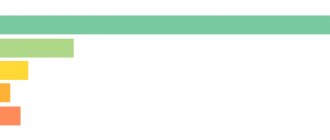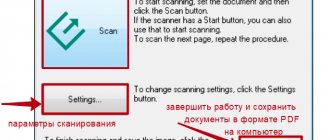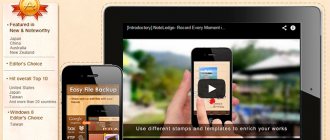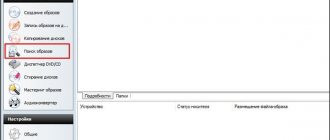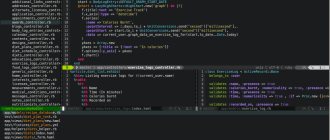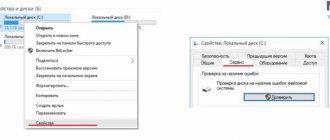December 18, 2020 Tools and services, Internet marketing, Online tools, Reviews and questionnaires, Services for websites
We continue our review of useful services that can be useful when running a business. We talked about how to create presentations, process free video or audio, work with text or images. But we have never discussed services for creating tests online. But if you use your imagination, they can also be used in many projects.
At the end of the article or right now, download a selection of materials for quick access online
Why do we need online tests?
First, attract potential clients by creating thematic tests that would immediately give the result to the test taker and encourage action.
Secondly, tests can be used when hiring new employees. You've probably heard about this.
Thirdly , if you conduct trainings online and even offline, then try testing your students . Below you will learn about a service suitable for these purposes. Knowledge monitoring helps you understand which topics were poorly understood and what needs to be improved. Do you agree?
And now about the services that help create online tests.
I'm glad there's plenty to choose from. And not only English-language sites can help here, because without knowledge of the language it can be difficult to understand them, and advanced functionality is only available in paid plans. We will also tell you about domestic services, which are no worse than foreign ones and are almost always free.
Step 6: Performance Testing
Mobile devices provide less memory and available processing power for applications than desktop computers and laptops. For this reason, the efficiency of using the resources provided is very important in the operation of mobile applications. You should check the functionality of the application under test by changing the connection from 2G, 3G to WIFI, check the response speed, battery consumption, stability, etc.
It is recommended to check the application for scalability of the application and for possible performance problems.
As part of this stage, it is important to undergo load testing of the mobile application.
Functional testing
The functionality of the application must be fully tested. Particular attention should be paid to installation, updates, registration and login, provisioning, operation of device-specific features, and error messages.
Functional testing of a mobile app can, for the most part, be done the same way you would do it for any other type of app. For this reason, we will not go into detail about this type of testing. However, you should point out areas that are of particular importance to mobile applications.
Keep in mind that functional testing should include testing all the features of the application and should not be overly focused on any one feature.
As part of functional testing, you should perform the following tests:
• Testing the installation process; • Testing the possibility of updates; • Operational testing; • Testing the registration and authorization process; • Testing of device-specific functions; • Testing sending and receiving error messages; • Low-level resource testing: memory usage, automatic resource release, etc. • Testing of services: functioning both online and offline.
A selection of services for creating tests online
iSpring
iSpring is a solution for distance learning and testing of employees. Includes a course and test designer, as well as a cloud-based distance learning system. With iSpring, you will have a single learning management center that works 24/7. Employees take courses and tests, and you control how they learn, grow professionally, and how the learning results affect the company’s business performance.
Google Forms / Google forms for creating surveys
Of course, this is not exactly an online test maker, so we’ll talk about it separately. If you created surveys using forms, then everything is clear: you write a question, offer answer options and wait for the results. However, few people know about the free Flubaroo plugin, which automatically checks respondents’ answers and assigns ratings according to specified criteria.
Add to your usual Google Forms
The online trainer receives a tool to test students' knowledge. The plugin calculates points for a survey (a kind of testing), gives individual feedback via email to each student according to the results, and also sends the correct answers.
Full testing
Full testing is carried out before release.
Includes quick testing, regression testing, monkey testing on 100 devices, and update testing. Regression testing involves running ALL test cases for the project. Test cases not only for the last iteration, but also for all previous and general test cases according to requirements. This takes a day or three per device, depending on the project.
A very important step is testing updates. Almost all applications store data locally (even if it is a login cookie) and it is important to make sure that after updating the application all user data is preserved. The tester downloads the build from the market, creates saved data (login, playlists, financial accounting transactions), updates the application to the test build and checks that everything is in place. Then it runs a smoke test. The process is repeated on 2-3 devices.
Developers often forget about migrating data from older versions, and testing updates allowed us to identify many critical errors with crashes and deletion of user data about purchases. This has saved more than one application from angry reviews and loss of audience.
We conduct the release monkey test on 10 iOS and 80 Android devices using the Appthwack service.
At the end of the full testing, in addition to writing, a detailed report is compiled manually.
The assembly is released only if all test cases are passed 100%.
How Test Builders Work
The test creation function is available after registering on the site. A huge advantage will be the collection of ready-made tests on various topics, so you don’t have to rack your brains when developing your questions. They can be saved to your database, then mixed or changed, used when creating new tests, without entering the same question each time. Significantly saves time!
Using the test designer, you can create different types of questions and answers:
- Choose one answer option from several proposed ones;
- Select several answer options from those proposed;
- Fill in the missing words in the spaces in the text;
- Write your answer in detail;
- Choose true or false statement.
Questions can be framed by inserting images, text documents, and even videos. Most often, this function is available in paid versions, but the tests look decent even without pictures.
Answers can be displayed in the form of graphs and diagrams, in numerical value or percentage, and also as text that will tell the test taker where he has gaps and what needs to be tightened up. And you set all these parameters yourself!
The finished test can be easily integrated into the website. If there is no such need, then generate a link from the test and share it with your friends on social networks. Invite participants via email to take the test directly in the service. Choose what you need to achieve your goal.
Quick testing
Quick testing is carried out after the development iteration is completed, if the build does not go to release.
First, smoke tests are carried out to understand whether it makes sense to test the assembly.
Then all completed tasks and fixed bugs are taken per iteration from Jira and the result is carefully checked for compliance with the task description. If the task included new interface elements, it is sent to the designers for comparison with the layouts.
Incorrectly completed tasks are reopened. Bugs are filed in Jira. For non-UI bugs, logs from the smartphone must be attached. For UI bugs, screenshots with notes about what’s wrong.
After this, functional tests for that iteration are performed. If bugs are found that are not covered by test cases, a new test case is created.
Monkey tests are run for Android applications.
adb shell monkey -p ru.stream.droid —throttle 50 —pct-syskeys 0 —pct-ap pswitch 0 -v 5000 At the end of testing, the “bug testing passed” checkbox is checked in the build server (yes, the name of the checkbox is not very correct: ).
If no blocker, critical or major bugs were found during testing, the “can be shown to the customer” checkbox is checked. No build is sent to the customer without the approval of the testing department. (By agreement with the customer, builds with major bugs are sometimes sent).
The criticality of the bug is determined using the table.
Once testing is completed, the PM receives a detailed report letter.
English-language services for creating tests online
Classmarker is a convenient constructor that will help you create an online test in a few minutes for both 5 users and 5000, saving you from hours of routine work on calculating results.
For educational purposes, the service can be used for free, although the functionality is quite limited. So register, checking in the “Administrators” tab, “for educational use.”
This way you will get free functionality
In the free plan, you can create up to 100 tests monthly, that is, 1200 tests per year. However, there are certain limits: test results are not sent to participants by email, it is impossible to upload pictures or files when creating a test, questions are not saved in virtual storage, they will have to be entered each time you work on a new test, detailed statistics for each participant are not available. Plus, the service inserts advertisements into the finished test. What did you think? 
ProProfs
is a similar service, which also has a free plan with limited functionality. Go to the Pricing and Quiz tabs. EasyTestMaker is another test designer that allows you not only to create materials for publication on your website, but also displays a list of questions in doc or pdf format, ready for download. Maybe someone will be interested in such a function. The free version has a limit of 25 tests per year.
Requirements testing
Testing begins before development. The design department transmits the navigation scheme and screen layouts to the testers, the project manager - the requirements invisible on the design. If the design is provided by the customer, the layouts are checked by our designers before being sent to the testing department.
The tester analyzes the requirements for completeness and inconsistency. In every project, the initial requirements contain conflicting information. We solve them before development begins. Also, in each project the requirements are incomplete: there are not enough layouts for secondary screens, restrictions on input fields, error displays, buttons do not lead anywhere. Things that are invisible on layouts are not obvious: animations, caching of pictures and screen contents, working in non-standard situations.
Requirement deficiencies are discussed with the project manager, developers and designers. After 2-3 iterations, the entire team understands the project much better, remembers forgotten functionality, and records decisions on controversial issues.
Basecamp is mainly used at this stage.
When the requirements are complete and consistent, the tester creates smoke tests and functional tests that cover the source data. Tests are divided into general and specific for different platforms. We use Sitechco to store and run tests.
For example, for the Trava project, 1856 tests were written at this stage.
The first testing step is completed. The project is going into development.


